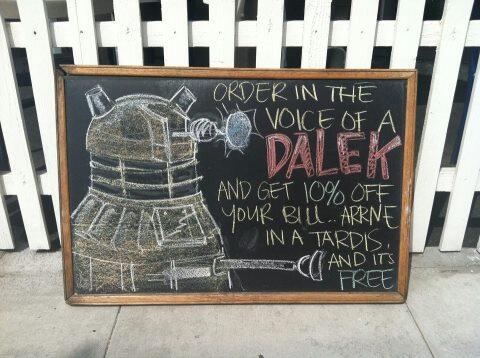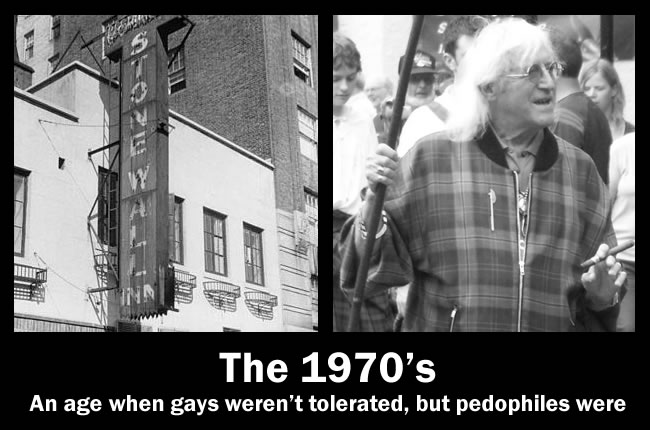Chalk board
Sunday, April 7th, 2013 | Photos

Tweeted by Rich.

Tweeted by Rich.

Tweeted by Rich.
I’ve been continuing through Philip Pullman’s triology, His Dark Materials, and recently finished the second book, The Subtle Knife.
I found it slow to get started – I was just bored at first, as the story saw the protagonists running round ordinary Oxford with no fantasy to add some spice to the story. But eventually the stumbled back into the other worlds and the story picked up, it eventually became entertaining and ultimately worth baring through the early chapters.
It’s also clear that this isn’t really a trilogy of books, it’s one book split into three parts – reading one and not the others wouldn’t make much sense, or provide any conclusion to the stories.

Have you ever been told that only 7% of communication is verbal? The other 93% is not about the words you say, but the body language, tone and gestures that accompany it.
Incredible isn’t it? Almost too incredible. Indeed, there is a reason that it feels too incredible to be true – because it isn’t true. It’s a statistic based on the work by Albert Mehrabian at the University of California, which you can read all about on Wikipedia, that tests how people feel towards the speaker. But it doesn’t accurately translate into what percentage of your message is verbal or nonverbal.
Mehrabian states this on his website:
“Total Liking = 7% Verbal Liking + 38% Vocal Liking + 55% Facial Liking. Please note that this and other equations regarding relative importance of verbal and nonverbal messages were derived from experiments dealing with communications of feelings and attitudes (i.e., like–dislike). Unless a communicator is talking about their feelings or attitudes, these equations are not applicable. Also see references 286 and 305 in Silent Messages – these are the original sources of my findings.”
And has previously said in an email that was reproduced in the book Lend Me Your Ears:
“I am obviously uncomfortable about misquotes of my work. From the very beginning I have tried to give people the correct limitations of my findings. Unfortunately, the field of self-styled ‘corporate-image consultants’ or ‘leadership consultants’ has numerous practitioners with very little psychological expertise.”
Of course body language and vocal variety are an important part of communication. But the words you actually say do count for something too.

A bit late, but I found this while clearing out my computer and realised I never posted it.

Recently, a new lunch place specialising in jacket potatoes opened across the road from our office, named Jackpots.
I tried it out last week, though I wasn’t overly impressed. The potato was nice and the toppings were OK, but I think a few key problems let them down. First of all, you can’t build your own potato. They have a few toppings you can select a combination of, otherwise you have to go for a “set menu” style. In an age of Subway and Barburrito, it would be much better if they could just lay them all out and you could pick any combination.
Secondly, I don’t think the containers they give them out in. They’re like the noodle boxes you get from Wokon. They do fold out to form a flat surface, but they don’t do this very well and that is equally annoying as it has no edges. Give me an old fashioned takeaway box any day.
If you’re using a Cisco Linksys E1000 router, you may have noticed that it creates a guest network – but there is no sign of how to control it or change it through the web interface!
Strangely, that is how it is – Linksys seem to have omitted any kind of control over it from the web interface. The only way you can modify it is to run the Cisco Connect software on your computer.
Launching this will bring up a control panel, of which the bottom left option will be “guest network” and from here, you can make changes.
It also appears, from the list of available wifi networks, that the guest network is not password protected. This isn’t the case if you have set a password, but it does not use the standard WPA or WEP encryption. Instead, it allows clients to connect, but them prompts them for a password before allowing them internet access.
Having recently read and very much enjoyed The Grapes of Graph (perhaps I should say “was moved by” rather than “enjoyed”), it is isn’t interesting to see the parallels between the harsh times experienced in the Great Depression and the not as bad but still regrettable plight of many of our own members of society.
In the book, Ma Joad says something along the lines of “the thing I’m learning more. If you’re in trouble or hurt or need—go to poor people. They’re the only ones that’ll help —the only ones.”
This is a phenomenon that can be often seen throughout society. For example, my father, who is a gas engineer, once told me that poor people are far more likely to tip than wealthy people are – perhaps because they are more aware of financial pressures and the had work people do.
This can also be seen in the homeless world as well. Last night we met three people with dogs and all of them told us the same thing – the dog eats before I do. You can tell – all of the dogs looked well fed, their fur was in good condition and most of them were wrapped up in nice coats, one was even in a hoodie.
To matter how down on their luck people get, most never stop caring about others. Indeed, it may even be a prerequisite.